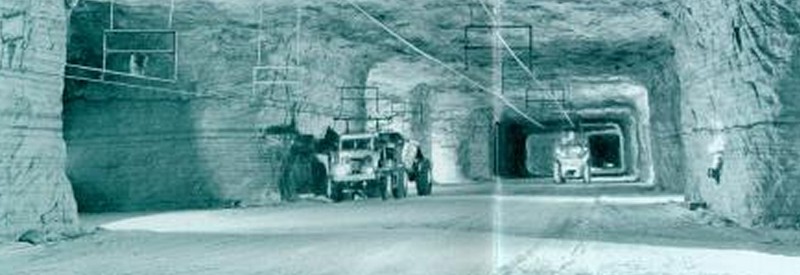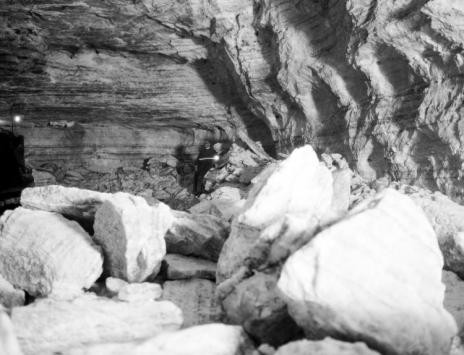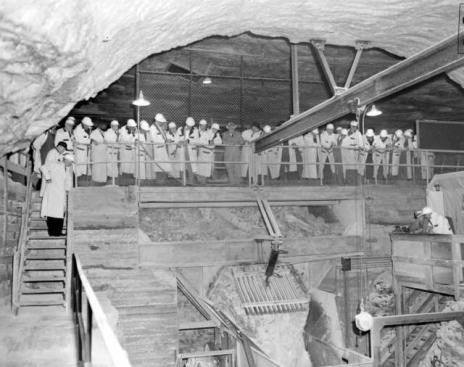Detroit Salt Mines
Introduction
Text-to-speech Audio
Images
Detroit Salt Mine Formation

The shafts leading into the mines. Reuther Library/Tony Spina

Large salt rocks within the mine

Mine employees

Backstory and Context
Text-to-speech Audio
Creation of Salt Underneath the City of Detroit
The salt deposits underneath Detroit, spreading from north of Allen Park, underneath Dearborn’s Rouge, and covering most of Melvindale, were formed nearly 400 million years ago during the Devonian Period. It was a time when the first fish were evolving to grow legs to make their way onto land; the first seed bearing plants were coming into existence. Also, the area known as the Michigan Basin was separated from the ocean, and it was sinking lower and lower into the Earth’s crust. Salt water poured into the Basin, gradually over many years, until the oceans receded. The saltwater soon evaporated, leaving behind huge salt deposits.
Glacial activity led to the formation of the Niagara Escarpment, a large basalt rock area covering most of Wisconsin and Michigan, burying the salt deposits. The Great Lakes sit atop the basalt rock, and below, nearly 1,200 feet, the salt deposits remain as the largest known salt deposit in the world with over an estimated 71 trillion tons of unmined salt.1
History of Salt Mining in Detroit
Native American tribes were historically known to filter and gather salt in the Detroit area from the various
By 1910, after the construction of a 1,060-foot shaft, extraction of the salt finally began. Objects lowered into the mines were destined to stay there forever, including the mules used to carry the extract salt. Four years later, under
Then in 1922, to meet growing demand, International Salt dug a second shaft to accommodate greater manpower and machinery, and most of the machinery used at that time is still in the mines today. Salt mining continued until 1983, when International Salt closed the mines. In 1997, Detroit Salt
Today, the Kissner Group owns the mines, which now span over 1,500 acres with 100 miles of tunnels beneath Detroit, and the mine is considered to be the safest, most efficient in the world.2
Cite This Entry
Newcomer, Daniel. "Detroit Salt Mines." Clio: Your Guide to History. October 19, 2015. Accessed March 31, 2025. https://theclio.com/entry/19114

